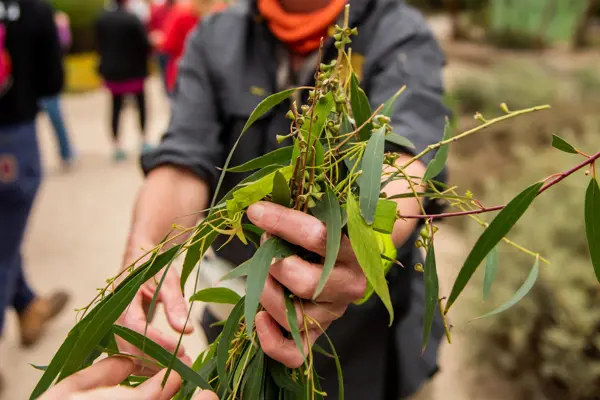
‘Raising Rarity’ program to engage the wider community in plant conservation
This month, Royal Botanic Gardens Victoria (RBGV) released a paper outlining its emerging ‘Raising Rarity’ program - a community-based outreach program designed to engage the wider community to conserve threatened Victorian plant species.
“For the first time, we are bringing together science, education and horticulture teams at the Gardens, to develop a program that inspires and involves the community in plant conservation,” she said.
“With over a third of plants in Victoria listed as threatened, we need the help of the wider community to join us in our conservation efforts. With community involvement, we can grow more plants in more locations and in climates they may be better suited to,” said Dr Meg Hirst, Seed Ecologist at RBGV.
The goal of the program is to engage as many people as possible in the protection of Victorian flora through meaningful and sustainable conservation projects. Current participants in the program include schools, local government, and other botanic gardens. The paper also outlines RBGV’s plans to make rare and threatened plants available in nurseries for purchase by the public.
To date, Raising Rarity program has achieved various milestones:
- Schools outreach: The program has engaged two schools, Penleigh Essendon Grammar, and Rosedale Primary School, in two separate pilot programs, where students grow rare and threatened species from their local areas, collect data on growth and collect seed at the end of the season to return to RBGV’s Victorian Conservation Seedbank.
RBGV’s Victorian Conservation Seedbank and the RBGV Living Collections, are now being used as a ‘back stop to extinction’ in the event wild populations become more threatened through fire, habitat loss, and other events.
- Local Government outreach: In May this year, RBGV launched the Threatened Plant Living Collection Plan in partnership with the City of Melbourne and the University of Melbourne to guide the selection and display of threatened plants within the city for the purposes of plant conservation – intended to serve as a blueprint for other interested local government areas. The first planting as part of the project was undertaken last week with the critically endangered Grevillea jephcotii - Pine Mountain Grevillea being planted within Royal Park.
- Botanic Gardens outreach: RBGV has worked with six other botanic gardens in Shepparton, Colac, Ballarat, the Dandenong Ranges, Sale and the City of Casey to establish a multi-site collection of plants and to support these gardens to protect rare plants from their local areas. With additional funding, the RBGV aims to extend the program to the other botanic gardens that have expressed an interest in the program.
- Commercialisation of the rare plant collection: RBGV has trialled 25 rare plants in the nursery and research beds at Royal Botanic Gardens Cranbourne with the aim of making these available for purchase by the public in 3-4 years to support RBGV conservation projects.
As part of the program, RBGV’s scientists and horticulturists explore the ‘horticultural potential’ of each plant to determine whether it is suitable for inclusion in the program. Research can include optimal methods of propagation for each plant such as testing seeds through X-ray imaging, genetic testing and pre-treatments, and monitoring growth of the plant in the nursery such as analysing growth rate or testing for pests and diseases. Many of these species have never been grown before.
Dr Hirst says that programs like Raising Rarity help to cure “plant blindness” – the inability to notice plants in one’s surroundings. “When we educate communities about plants, there is a greater appreciation and awareness for them, which ultimately leads to conservation action,” she said.
The program has been made possible thanks to supporters including The Foundation for Australia’s Most Endangered Species (FAME) and The Alpine Garden Society Victorian Group.
The paper, ‘Raising Rarity: Creating meaningful and sustainable conservation outcomes through community-based outreach’ was published by RBGV staff, Dr Hirst, John Arnott, Manager Horticulture at Royal Botanic Gardens Cranbourne and Russell Larke, Conservation Horticulturist at RBGV. To read the paper, visit: https://journals.rbge.org.uk/rbgesib/article/view/2000



